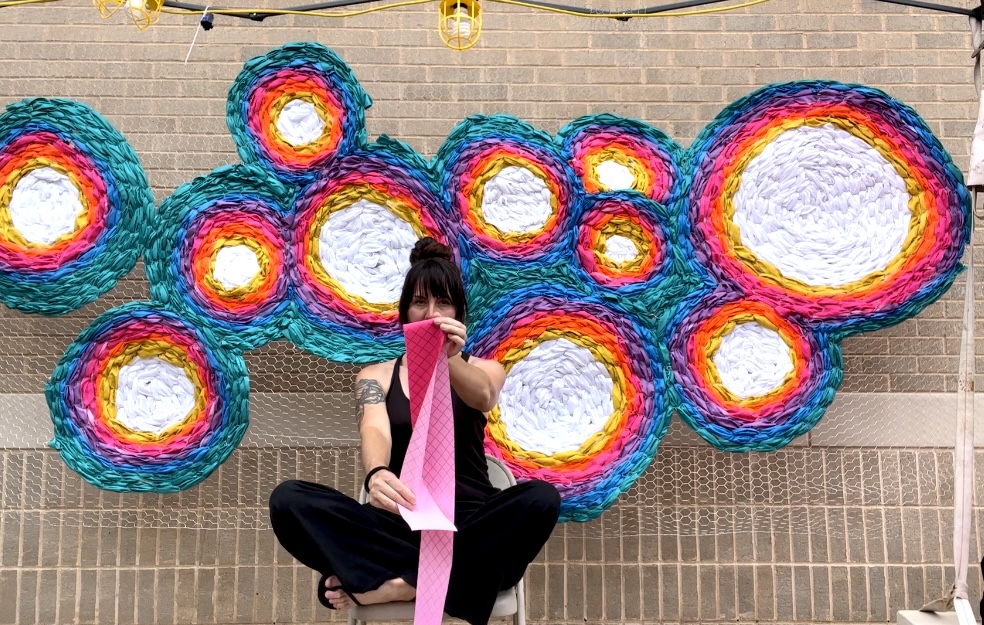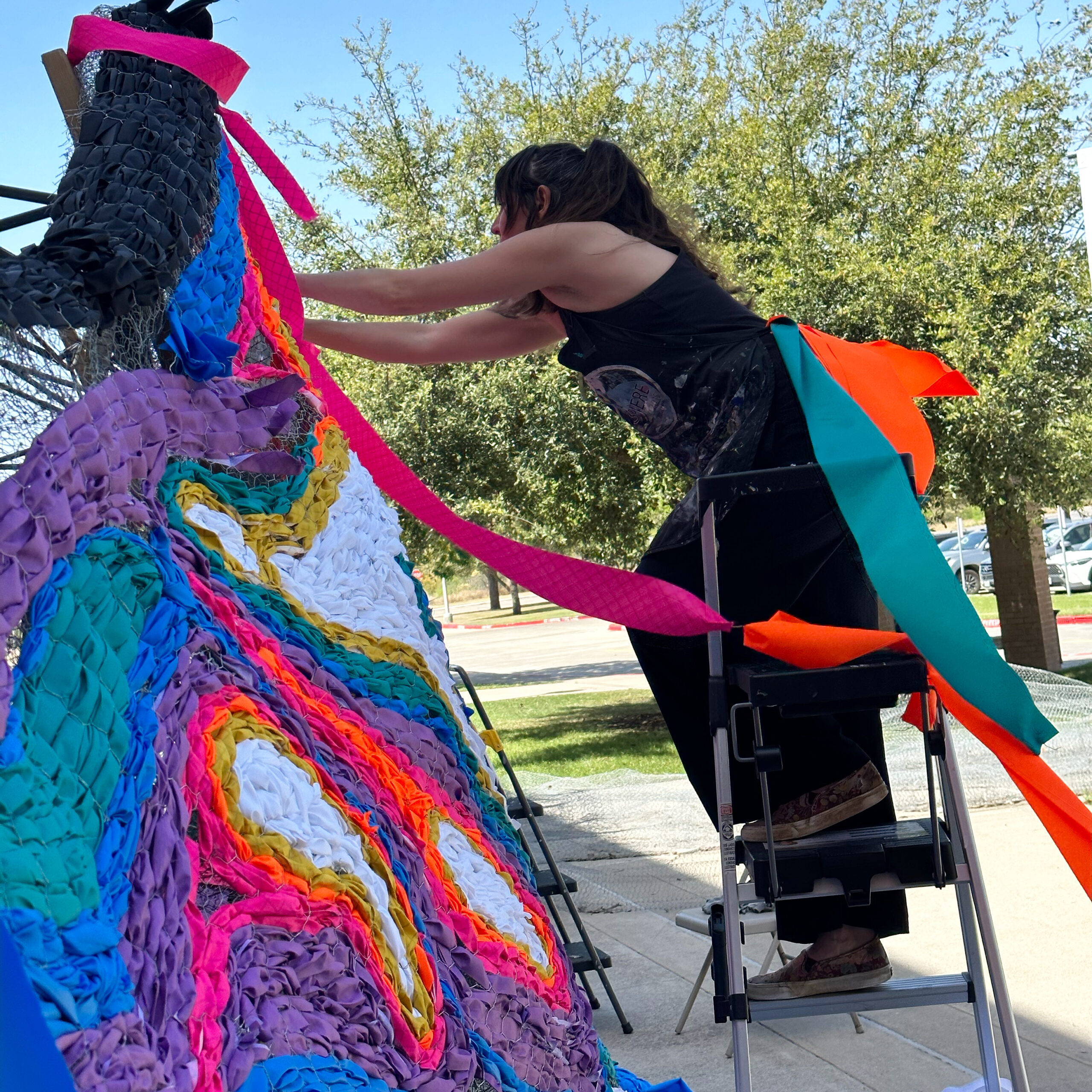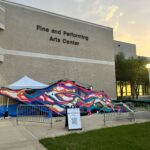“Rhizome” is a botanical word referring to an underground plant stem that runs out horizontally, sending out roots and shoots for new plants. In Laredo, the word has a special significance, not as part of a plant, but as the name of a colorful collaborative art installation with roots and shoots coming from different communities.
Artist and visiting assistant professor at Texas A&M International Crystal Wagner is helping to nurture this unique project. She joined the Standard to explain “Rhizome” and its involvement in the community. Listen to the interview above or read the transcript below.
This transcript has been edited lightly for clarity:
Texas Standard: Before we talk about the concept behind this installation, can you paint a picture of it for us? What does it look like?
Crystal Wagner: Oh, it’s so interesting. All of my work is based on and inspired by nature. So, forms and structures found in nature. So butterfly wings, flowers, all kinds of different organic matter – cells, root systems. If you take all of that together and you mix it up into an abstract work that’s growing on the side of a building like fungus, it’s kind of like that.
Oh, wow. So tell us a little bit more about it. Is it sculptural? Would you say that’s the traditional category it would fall under?
Yeah, I would say that they’re sculptural installations.
So one of the things that I do as an artist is I show up on location and I use the architecture as this canvas. And I’m really interested in making work that lives in an environment.
That’s what’s so significant about what I’m doing here at Texas A&M International University, which is really growing what is going to be the largest installation that I’ve done through and on the outside of the building and on the inside of the building. So it very much is very immersive.
I mean, I try not to get a little sci-fi, but there’s very much a “Stranger Things” kind of element to the way that the fungus can grow. But it’s not fungus. It’s very much like my vocabulary as an observant person who lives on the planet.
So I guess you could say this is an art installation that has kind of taken on a life of its own, in a sense.
Oh, yeah. And they have life cycles from inception, from the moment they start growing until they come down.
That’s what’s so unique about the project that I’m doing here in Laredo, because this is the first one where I’m really using art as action. So it’s not just that the installation happens and there’s a multidisciplinary element to it, but it’s very much art as action.



















